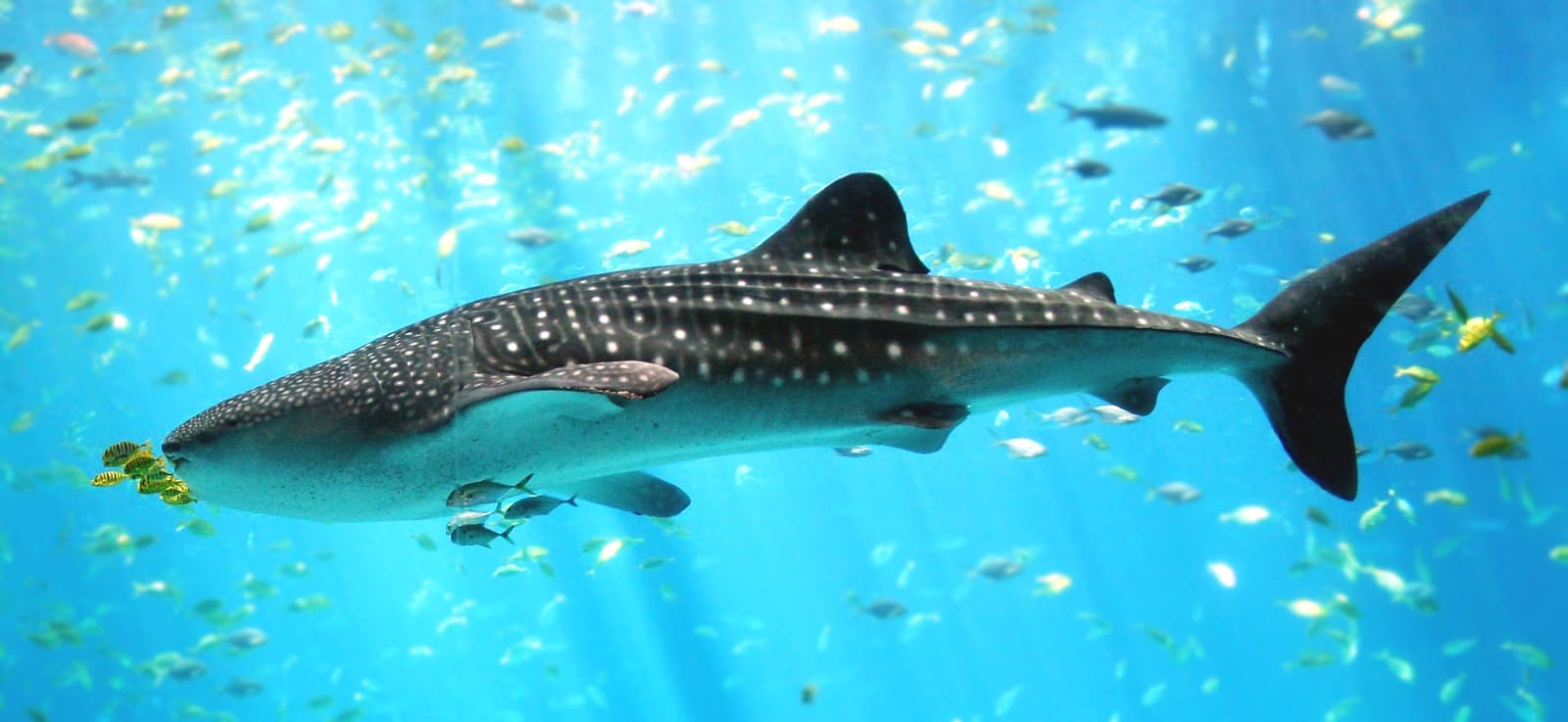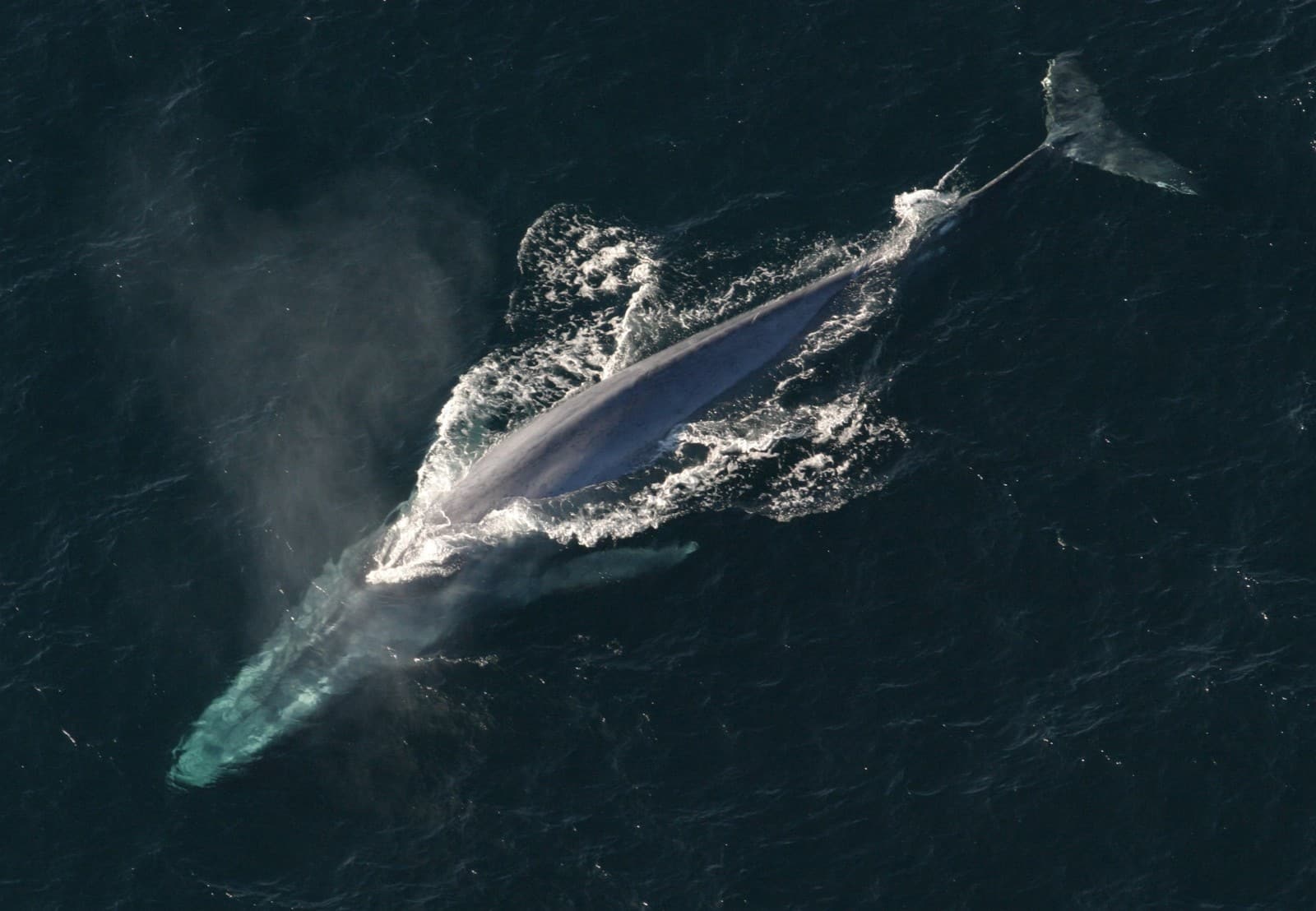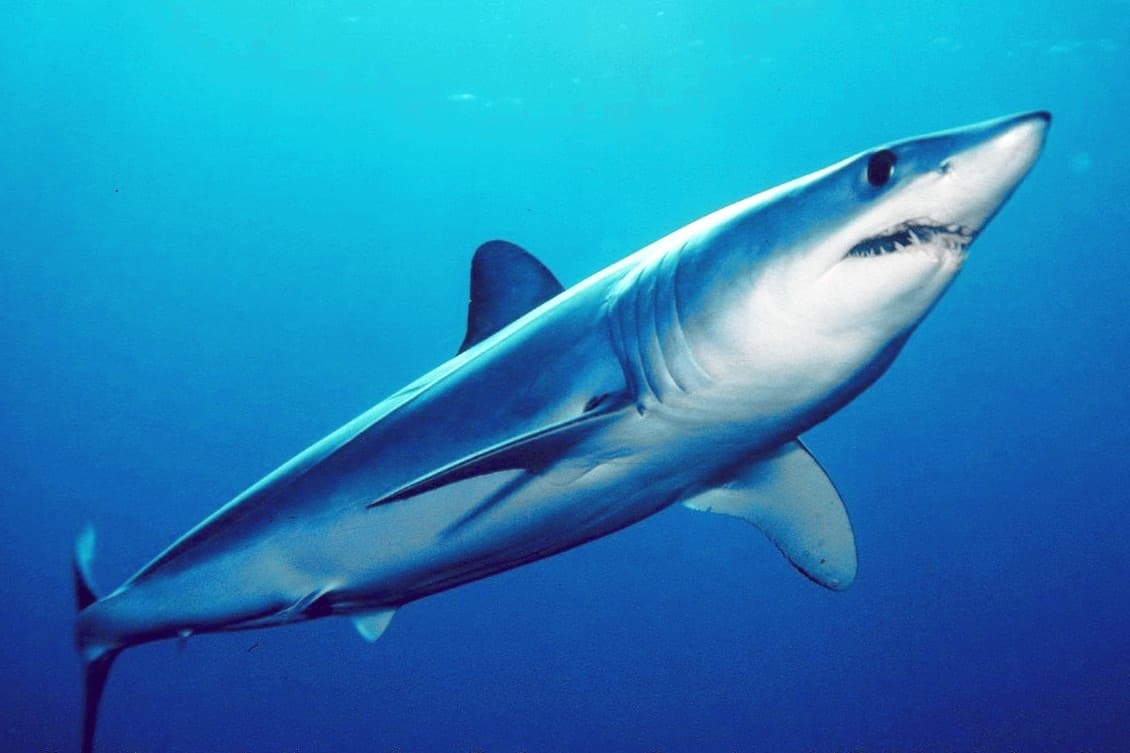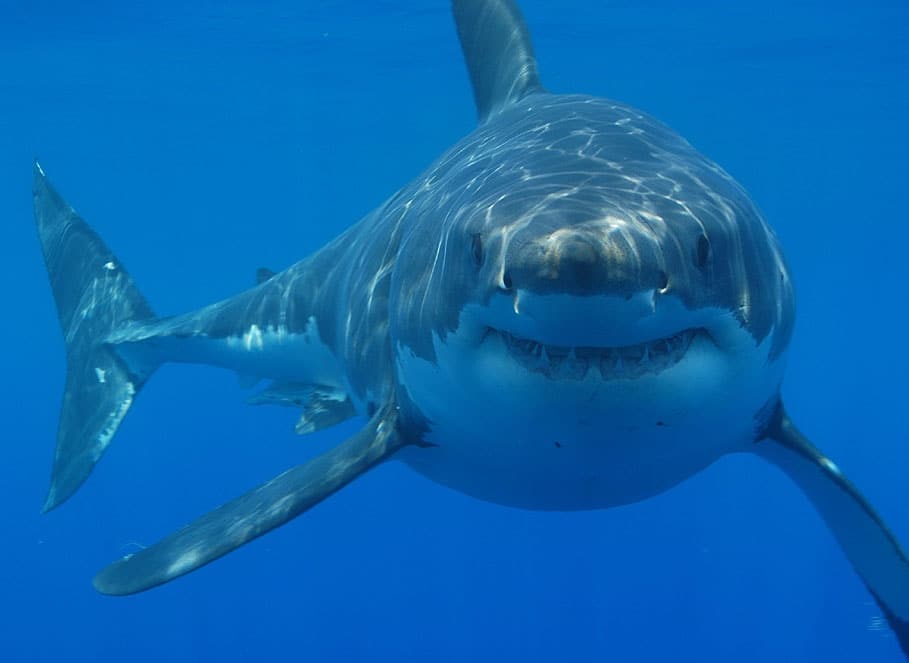Whale Shark vs Great White Shark: A Complete Comparison
In the vast expanse of our oceans, two sharks stand out for their impressive proportions: the Whale Shark vs Great White Shark. While both species command attention, they couldn’t be more different in their nature and behavior. The Whale Shark (Rhincodon typus) holds the title of largest fish on Earth, reaching lengths of 40 feet (12.2 meters), while the Great White Shark (Carcharodon carcharias) typically measures 15-16 feet (4.6-4.9 meters).
Despite their shared classification as sharks, these marine giants occupy entirely different ecological niches. Whale Sharks are gentle filter feeders that swim with their mouths open to consume plankton and small fish, while Great Whites are apex predators equipped with over 300 serrated teeth designed for hunting marine mammals and large fish.
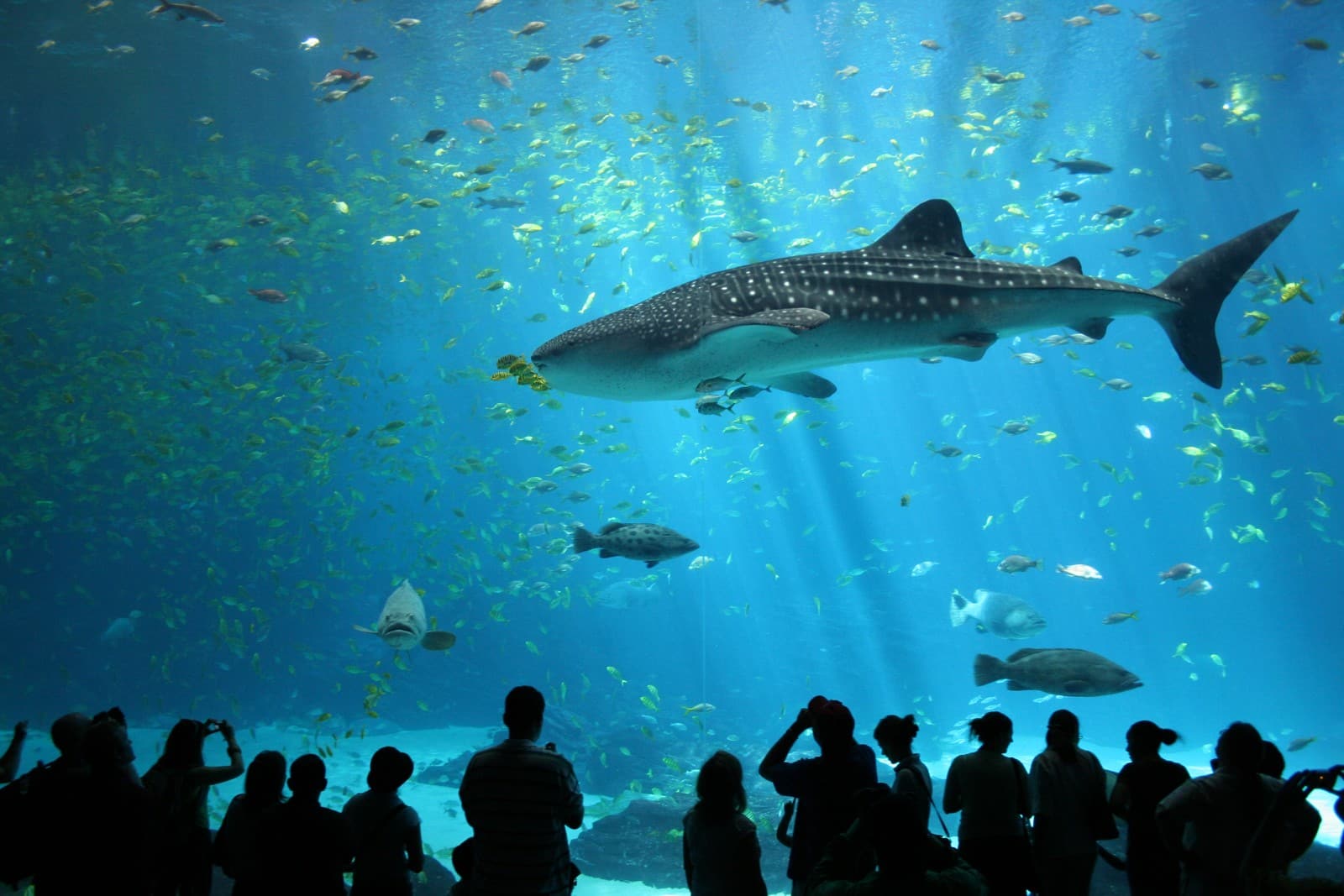
© Zac Wolf / CC BY-SA 2.5
The Whale Shark’s massive size and distinctive spotted pattern make it instantly recognizable. Despite being the largest fish species, these gentle giants feed primarily on some of the ocean’s smallest organisms.
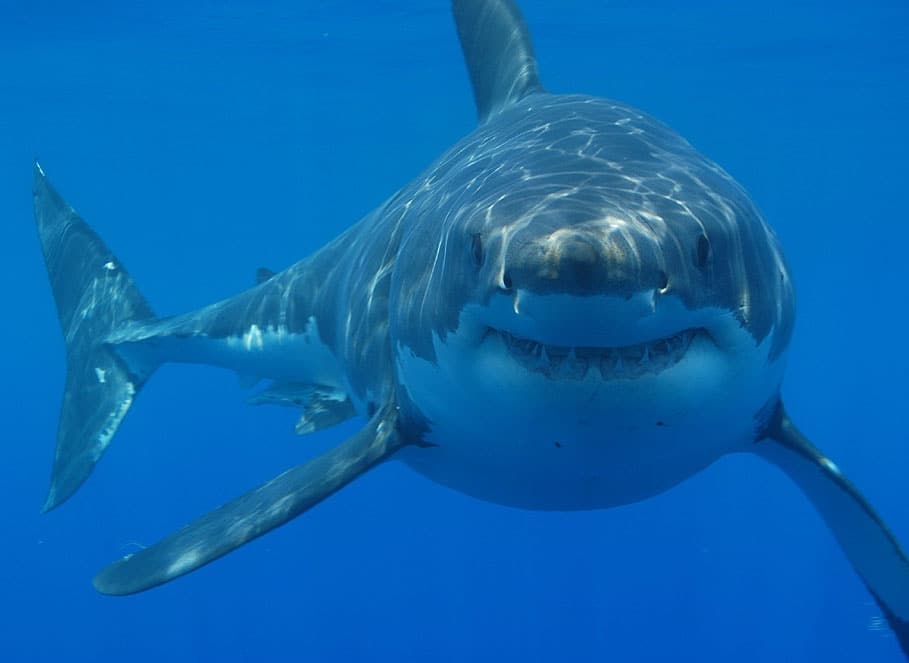
© Hermanus Backpackers / CC BY 2.0
The Great White Shark’s powerful build and distinctive countershading demonstrate its evolution as an apex predator. Its torpedo-shaped body and powerful tail enable bursts of speed up to 35 mph (56 km/h).
Key Differences: Whale Shark vs Great White Shark
| Feature | Whale Shark | Great White Shark |
|---|---|---|
| Size | 18-40 feet (5.5-12.2 m) | 11-16 feet (3.4-4.9 m) |
| Weight | Up to 47,000 lbs (21,300 kg) | Up to 5,000 lbs (2,268 kg) |
| Diet | Plankton, small fish, squid | Seals, sea lions, fish, other sharks |
| Speed | 3 mph (5 km/h) | Up to 35 mph (56 km/h) |
| Lifespan | 70-100 years | 70 years |
| Teeth | 3,000 tiny teeth (rarely used) | 300 serrated triangular teeth |
Habitat and Distribution
Whale Sharks prefer warm, tropical waters between 30°N and 35°S latitude, frequently appearing near the surface to filter feed. They’re commonly spotted in the Gulf of Mexico, Philippines, and along Australia’s northwestern coast. Great White Sharks, meanwhile, thrive in cooler, coastal waters worldwide, particularly around seal colonies in places like South Africa, Australia, and California.
Behavior and Social Structure
While both species are typically solitary, their social behaviors differ significantly. Whale Sharks occasionally gather in feeding aggregations of up to 100 individuals when food is abundant. Great Whites maintain strict territorial hierarchies and typically hunt alone, though they may tolerate others at large carcasses.
Conservation Status
Both species face significant conservation challenges. Whale Sharks are classified as endangered, primarily due to fishing pressure, vessel strikes, and habitat loss. Great White Sharks are listed as vulnerable, threatened by fishing, shark nets, and negative public perception despite their crucial role in marine ecosystems.
Who Would Win in an Encounter?
While this question frequently circulates online, it’s important to note that these species would rarely, if ever, interact in nature due to their different habitats and behaviors. Great White Sharks are powerful predators, but Whale Sharks’ enormous size serves as a natural deterrent. Additionally, Whale Sharks’ thick skin (up to 6 inches/15 cm) provides significant protection. In reality, these species avoid each other, occupying different ecological niches.
Interaction with Humans
Despite their imposing size, Whale Sharks are known for their gentle nature and sometimes even allow swimmers to approach them. Great White Sharks, while not the mindless killers often portrayed in media, should be treated with extreme caution due to their predatory nature. Both species are crucial to marine ecosystem health and deserve respect and protection.
Through understanding these magnificent creatures’ differences and similarities, we gain greater appreciation for the diversity of life in our oceans and the importance of protecting these remarkable species for future generations.
